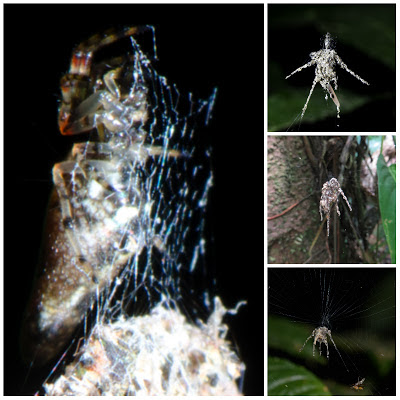 |
| We know this tree is tall- but how old? |
How old are trees in the Amazon?
How can you tell the age with no tree rings?
How can you tell the age with no tree rings?
Most people are familiar with the technique of looking at tree rings to measure the age of a tree. For every ring, you can see another year that the growth was stunted in the winter and flourished in the summer. However, that presents a problem for aging trees in the tropics where the seasons aren’t typically as well defined.
So, how is it done?
There are a few ways it can be done, and by using a combination of techniques a solid estimate of the age is possible. Here are few of the most modern techniques:
Carbon Dating
When plants change carbon dioxide into organic matter (i.e. when they grow) during photosynthsis, they have an amount of a molecule called carbon-14 that matches the atmosphere. After entering the plant, the carbon-14 declines predictably over time via radioactive decay into nitrogen-14. So, by measuring carbon-14 in the middle of a tree (the oldest, first year growth) you can then get a pretty good rough estimate of the age of the tree. The downside? It takes a long time to analyze the tree in the lab, and not all trees sequester carbon at the same rate.
Invisible Tree Rings
Recent research showed that some tropical trees that don’t appear to have tree rings actually do have them- they’re just not visible to the naked eye. However, by taking x-rays of them you can see the calcium rings, associated with yearly growth, and therefor determine the age. The downside? Researchers still aren’t sure how many trees share these calcium x-ray visible rings.
Normal Tree Rings
 |
| Tree rings visible on this tree in the Amazon. |
It ends up that a lot more tropical trees have tree rings than originally thought. Here in Tambopata, for instance, the dry season is marked enough that tree rings would be visible in a lot of species.
How old are the trees? A good rough estimate is that it takes trees between 60-100 years to become mature, and can live for up to 600 years!
See more posts by biologist Phil Torres at TheRevScience










































